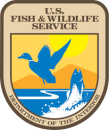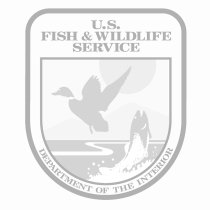Location
States
UtahEcosystem
River/stream, WetlandIntroduction
The Scott Matheson Wetland Preserve is located west of Moab, Utah, along the Colorado River and relies on flooding from the river to bring additional water onto it. In 1990, The Nature Conservancy (TNC) and Utah Division of Wildlife Resources (UDWR) purchased this 875-acre preserve. The preserve supports the Razorback Sucker (Xyrauchen texanus), an endemic and federally endangered fish in the Colorado River Basin, that relies on its wetland for nursery habitat. Razorback Suckers, a species capable of living up to 40 years, have undergone basin-wide declines due to habitat loss and competition from non-native species. Biologists from the Upper Colorado River Recovery Program regularly stock this species in the Colorado River in an attempt to increase population numbers. The preserve is also home to over 200 species of birds, amphibians, and mammals that depend on its wetland, including Northern leopard frogs (Lithobates pipiens), a species of greatest conservation need (SGCN) in Utah, and multiple waterfowl species that provide hunting opportunities.
Historically, flooding events from the river regularly provided water to the wetland and created nursery habitat for Razorback Suckers. Recent drought conditions have made flood events less frequent with the last major flood occurring in 2011, and a smaller one in 2019. These floods were the last natural events that brought water onto the preserve. Historic land use modifications such as berms and dams further prevent floods from reaching the preserve. Thus, portions of the wetland are left dry, affecting the multitude of species that live on the preserve.
In response to the lack of flooding, TNC, UDWR, private engineering firms, and additional state and federal agencies, began collaborating in 2015 to improve wetland conditions for Razorback Suckers and other wetland-dependent wildlife. Partners aimed to improve connectivity between the Colorado River and the wetland to mimic conditions that encourage historical flood events to increase water availability on the preserve, while also enhancing a spring-fed pond on the wetland to improve Razorback Sucker nursery habitat.
Key Issues Addressed
Lack of flooding due to drought, habitat alterations from land use (such as dams), and competition and predation from non-native species have caused basin-wide Razorback Sucker declines. Razorback Suckers spawn as spring runoff increases the Colorado River’s flow. Under ideal conditions, after the suckers deposit their eggs in the river’s substrate, the eggs hatch and the larvae drift with the river’s flow into flooded off-channel nursery habitat. Without flooding, larvae remain in the main channel of the Colorado River at a smaller size where conditions are less suitable for their growth and survival and where they are more susceptible to predation and competition from the over 70 non-native fishes in the river. The preserve is the only site within a 64-mile reach along the Colorado River that provides suitable nursery habitat for Razorback Suckers, and the lack of flooding events has reduced the quality of this habitat on the wetland. Biologists have observed wild-spawned Razorback Sucker larvae along the Colorado River near the wetland, but the lack of nursery habitat has led to reduced survival and adult recruitment of these larvae.
Project Goals
- Construct a water control structure structure
Something temporarily or permanently constructed, built, or placed; and constructed of natural or manufactured parts including, but not limited to, a building, shed, cabin, porch, bridge, walkway, stair steps, sign, landing, platform, dock, rack, fence, telecommunication device, antennae, fish cleaning table, satellite dish/mount, or well head.
Learn more about structure to manage flooding from the Colorado River onto the preserve to mimic natural flood events that have become increasingly rare - Improve nursery habitat for Razorback Sucker on the preserve by dredging a pond located in the center of the wetland
- Prevent non-native fishes from entering the nursery habitat by draining the central pond and installing fish screens
- Gain better understanding of local hydrologic conditions and processes
Project Highlights
Data Opportunity: Before releasing suckers into the river, biologists collect tissue samples to detect hybridization with non-natives and insert PIT-tags to track fish growth, movement, and population sizes.
- Water Control Structure: Starting in 2018, engineers installed a concrete structure to control water to and from the Colorado River. Engineers widened the channel, connecting the river to the wetland and allowing more water to flow onto the wetland during the springtime, carrying Razorback Sucker larvae with it. Biologists use a stream gauge to time peak flooding at the preserve, using the control structure to push peak flood waters and larvae into the central pond.
- Ponds and Pipelines: Engineers designed and construction crews dredged two acres of the central pond to add depth and create a refuge of water during drought conditions. The increased pond depth created habitat for Razorback Sucker larvae to stay in for several months until they are less vulnerable, and then biologists release them back into the Colorado River. Engineers also designed a pipeline to move groundwater from a spring into the central pond or disperse it elsewhere on the preserve.
- Preventing Non-Natives: Biologists drain the central pond annually to rid it of non-native species and installed fish screens to prevent large-bodied non-native fishes from entering the pond and preying upon the suckers.
- Signs of Success: In 2021, biologists released four Razorback Suckers into the Colorado River that had matured in the safety of the wetland pond. Since 2021 was a low-water year, biologists are hopeful that the project will only increase in success with larger flooding events. This project resulted in over 50 acres of improved wetlands on the preserve, providing benefits to waterfowl and other wildlife, as well as Razorback Suckers.
- Water Budget Survey: A multi-year survey effort aims to explain how much ground and surface water is coming onto the preserve and from where, which could help inform future management actions. Better understanding of baseline conditions will allow partners to detect and respond to changes or fluctuations in flow.
Lessons Learned
The Scott Matheson Wetland Preserve project succeeded because it was a collaborative effort with financial partner support throughout the entire process. Partners carried this project out in multiple phases which allowed them to break up work into manageable time periods, making funding easier to acquire by applying for financial support in smaller increments.
The engineering aspects of this project were costly. To obtain the necessary funding, partners utilized Utah’s Watershed Restoration Initiative that allows managers to identify threats to individual species and can be leveraged to show how addressing one threat leads to benefits for multiple species. Part of this process includes peer reviewing to improve project aspects. Since the preserve is home to many species, including game species such as waterfowl, partners successfully obtained funding from multiple sources by demonstrating the proposed improvements would address the threat of water loss that was affecting a multitude of species on the preserve.
Construction of the water control structure, habitat improvements, and minimizing effects to listed species required permits. The longest permitting period was for the U.S. Army Corps of Engineers permit which was 60 days from submission followed by longer periods of revisions. This wait time was ultimately beneficial for the engineers because they had more time to modify structural design plans, but it might not be beneficial for every project. Having a reliable team member to navigate the permitting processes was very beneficial and allowed the processes to go smoothly. Partners recommend starting the permitting process as early as possible when planning similar projects.
Ongoing maintenance is required to ensure continued success of this project and should be considered when planning similar projects, especially with human-engineered structures. Engineered structures for this project, including the water control structure and the pipelines, will need maintenance over time to ensure they continue working properly. Maintenance includes cleaning, replacement of solar batteries, and other hydraulics care.
Next Steps
- Partners will provide public education and outreach about the water control structure to explain why it is there and its role in the conservation of Razorback Suckers.
- Biologists will analyze results from the water budget survey and adjust their management actions accordingly.
- As urbanization increases in the valley and water becomes increasingly scarce, the future of the spring is uncertain. Partners will search for alternative sources of water, such as effluent, to use for the central pond.
Funding Partners
- Utah Watershed Restoration Initiative
- Utah Division of Wildlife Resources
- Desert Fishes Habitat Partnership
- The Nature Conservancy
- Federal Funding
- Utah Department of Transportation Mitigation Fund
Resources
- Matheson Wetlands Razorback Sucker Refugia System Story Map. This Story Map was completed during the proposal phase of the project and may not reflect completed aspects of the project.
- Utah’s Wildlife Migration Initiative: Razorback Sucker Migration Video
- WRI Project Description Links:
- WRI Project 3671 and WRI Project 3976: Scott Matheson Wetland Larval Razorback Sucker Entrainment, Phase 1
- WRI Project 4839: Matheson Wetland Habitat Rehabilitation
- WRI Project 5469: Matheson Wetland Pond Enhancement
Contacts
- Linda Whitman, Manager, Matheson Wetlands Preserve, The Nature Conservancy: lwhitham@tnc.org
- Nicole Nielson, Wildlife Impact Analysis Coordinator, Utah Division of Wildlife Resources: nicolenielson@utah.gov
- Makeda Hanson, Habitat Program Manager, Utah Division of Wildlife Resources: makedatrujillo@utah.gov
- Daniel Eddington, Coordinator, Utah’s Watershed Restoration Initiative, Utah Division of Wildlife Resources: danieleddington@utah.gov
- Paul Thomspon, Assistant Habitat Chief, Utah Division of Wildlife Resources: paulthompson@utah.gov
- Zach Ahrens, Native Aquatics Biologist, Utah Division of Wildlife Resources: zachahrens@utah.gov
CART Lead Author
Krystie Miner, Research Specialist, University of Arizona: kminer@arizona.edu
Suggested Citation
Miner, K., A. (2022). “Increasing Water Availability for the Razorback Sucker on the Scott Matheson Wetland Preserve.” CART. Retrieved from https://www.fws.gov/project/increasing-water-availability-razorback-sucker.







